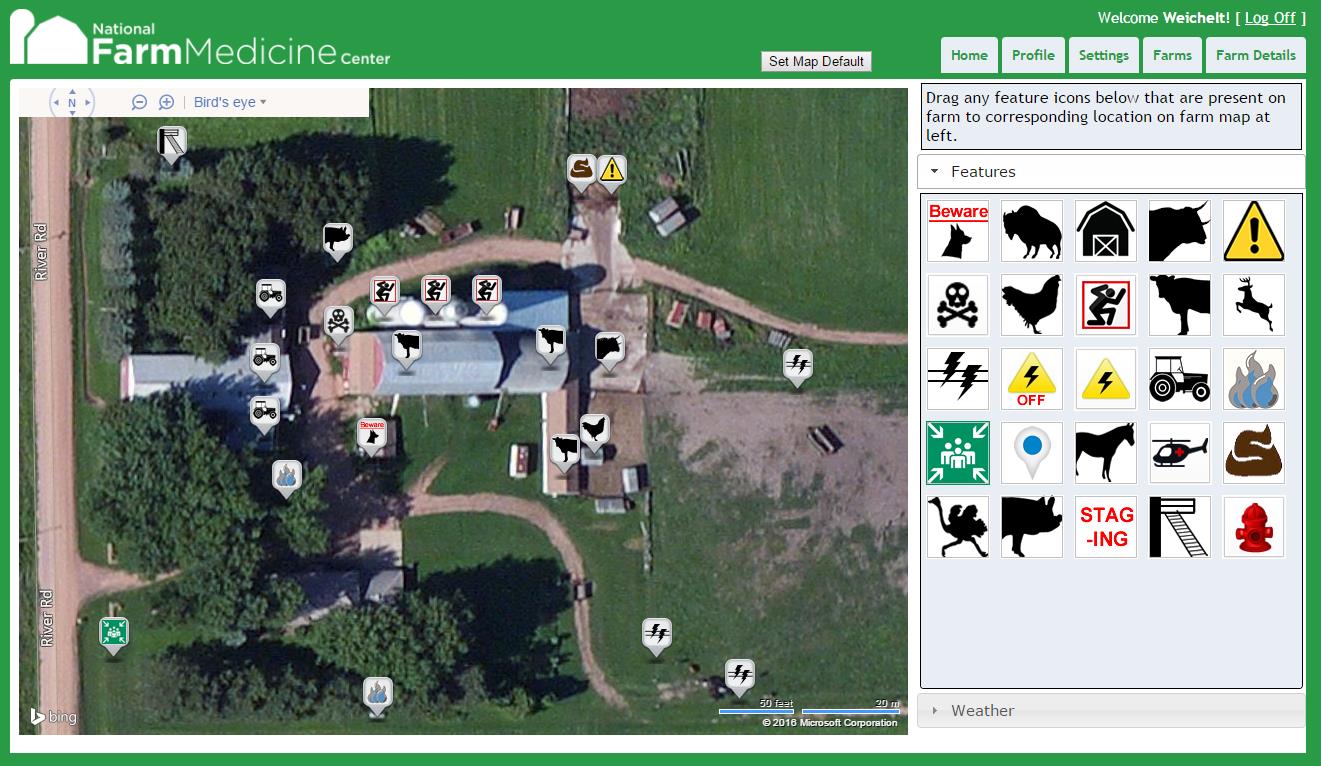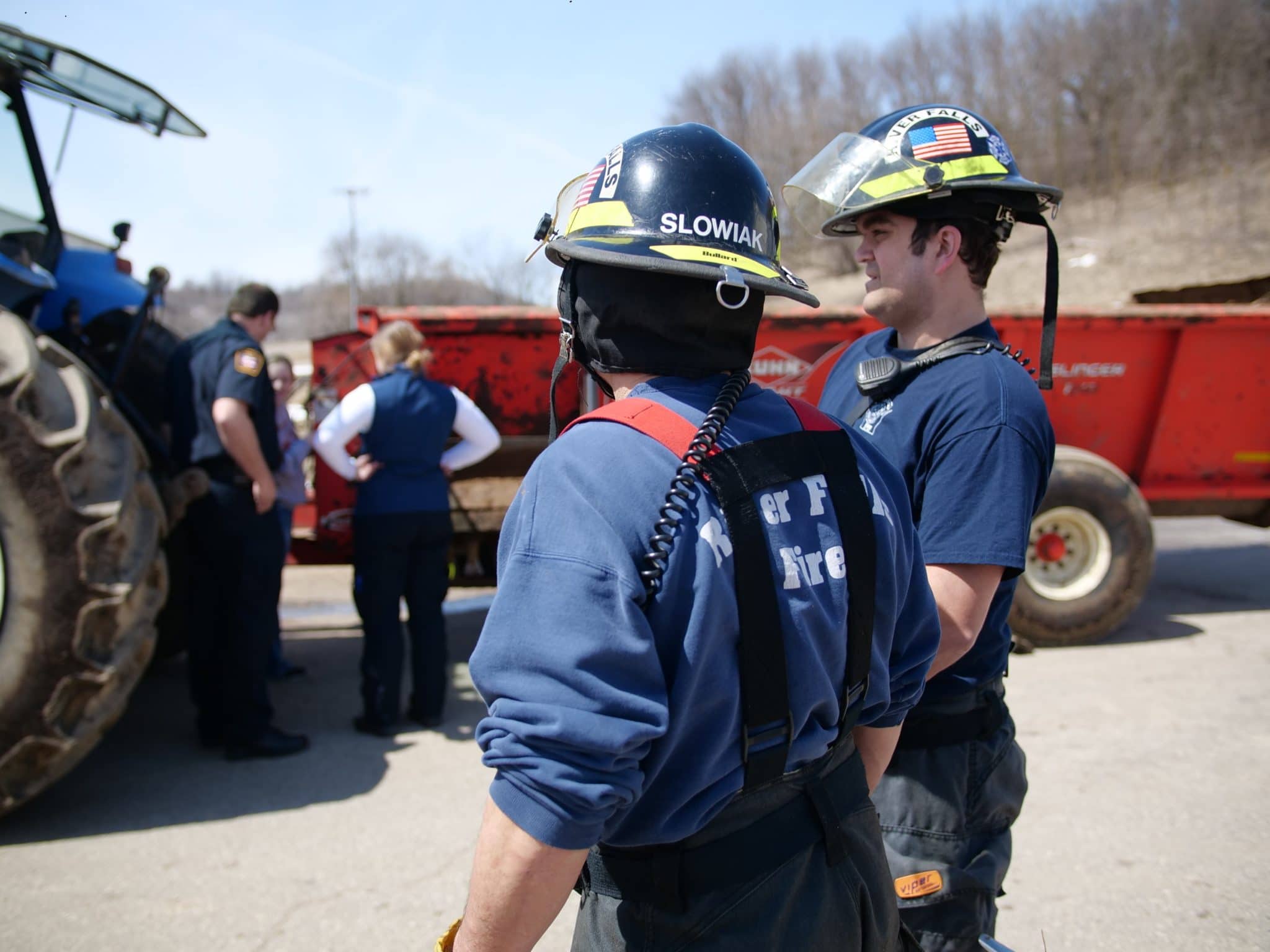Tracking Farm Hazards with Farm MAPPER
In the event of an emergency, farming operations can be a challenge for first responders due to the size of each operation and the unique risks they pose, which can vary from farm to farm. With the average farm spanning 444 acres, it can be difficult to navigate personnel to an exact location. Imagine trying to guide a response team past hazardous materials, animals, weight-limited bridges and unmarked paths. Farm MAPPER, a component of the Rural Firefighters Delivering Agricultural Safety and Health (RFDASH) project at the National Farm Medicine Center, addresses this issue by providing an overhead view of the farm; allowing first responders to become familiar with the operation on scene.

A screenshot of the Farm MAPPER software. Courtesy of Matthew Alfultis.
The way Farm MAPPER works is simple. Participants can register their farm through the website by setting up an account with an email address and password. Through the site, they can pull up an aerial view of the farm and place pins to mark certain hazards. There are markers for structures such as power and gas cut offs, access roads, water sources, animal pens, hazardous materials and much more. Just about anything on farm can be mapped with the software, which can then be viewed by first responders trying to navigate a farm operation. Once the map is complete, it is stored on the National Farm Medicine Center’s secure servers where it can only be accessed by the farmer.
Dr. Matt Keifer, Professor at the University of Washington, originally paired with Jerry Minor, Chief of the Pittsville Fire Department, in 2013 to create Farm MAPPER. The original concept revolved around scanning QR codes, or quick response codes, to access data saved on them. Once first responders arrived on scene, scanning the linked code would bring up the map of the farm created through the website. Compatible with smartphones and tablets, it was a versatile option that responders can easily utilize. With immediate access to a map of the farm, first responders were able to preplan an operation on scene. This was the intent of Dr. Keifer, who wanted to “Put into the hands of firefighters a map of the hazards to prepare for and necessary equipment to bring.”
With agricultural businesses posing the same dangers to first responders as commercial ones, like harmful chemicals and confined spaces, this foreknowledge allows them to plan for what is present on scene. Agricultural emergencies are made even more dangerous by the lack of planning materials and therefore overall unfamiliarity among first responders. Combined with a lower frequency of occurrence, this lack of planning makes responses to a farm high-risk for injury. Chief Jerry Minor explained, “Most firefighters are not prepared for these emergencies because they just don’t happen every day.”
When drilling with Farm MAPPER, pre-planning is possible and allows first responders to become acquainted with the farm, landscape and location of hazards on scene. In a time where many first responders are not aware of the dangers on farms, the application helps keep both first responders and farm workers safe by allowing them to understand what they are getting involved with.

The mapping program helps first responders better address farm emergencies. Courtesy of Matthew Alfultis.
Since the original application launched, Farm MAPPER has updated to be more accessible through a web-based system. Through the website, farmers or first responders can pull up the farm map on route to the emergency instead of having to wait for arrival on scene. When time is everything in a response, this new advancement helps immediately direct necessary aid to a specific location.
Dr. Casper Bendixsen and Kate Barnes of the National Farm Medicine Center are also testing other additions to the software, most notably augmented reality. When used, first responders could use their phone or tablet as a 360-degree lens to view where hazards are located in real time. Instead of looking over a large map of the farm, it would show them what is immediately in front of them and a more precise direction on where they need to go. Along with that, they hope to incorporate the use of QR codes to hold important documents such as schematics for equipment or training videos. This could allow for disassembling a piece of equipment someone is stuck in, or provide safety training to an employee unfamiliar with farming operations.
In the future, each of these aspects could be incorporated into all levels of a response. Officers could use the aerial view to direct resources on scene while first responders navigate on scene using the augmented reality to locate where the emergency is. Once they arrive at the incident, responders can utilize QR codes pull up any pertinent information about a piece of equipment involved. If you are interested in signing up for the program, Farm MAPPER is accessible online at http://www.nfmcfarmmapper.com/Account/LogOn.
The program is free to sign up for, but it is suggested that you collaborate with your local fire department to set up a joint account they can access. Along with that, a farm walk-through with your department is recommended since they can add specific markers to the map and identify additional hazards. They can determine what water sources would be appropriate to label as well as where the best location for a helicopter-landing zone would be. Since many farmers are familiar with their equipment, responders can identify an overlooked hazard. Chief Minor explained, “If it’s an everyday piece of equipment, they won’t recognize the danger of it.” More than anything, it helps the local department prepare for an emergency by seeing firsthand the equipment used at a particular farm. This supports the goals of the RFDASH project to create more communication between farmers and first responders about the hazards of the industry.
If you have any questions about Farm MAPPER or the RFDASH project, you can contact Dr. Casper Bendixsen by email at bendixsen.casper@marshfieldresearch.org or by calling the office at (715)387-9410.
NYCAMH/NEC, a program of Bassett Healthcare, funded in part by the National Institute for Occupational Safety and Health (NIOSH), and the New York State Departments of Labor and Health, is enhancing agricultural and rural health by preventing and treating occupational injury and illness.

